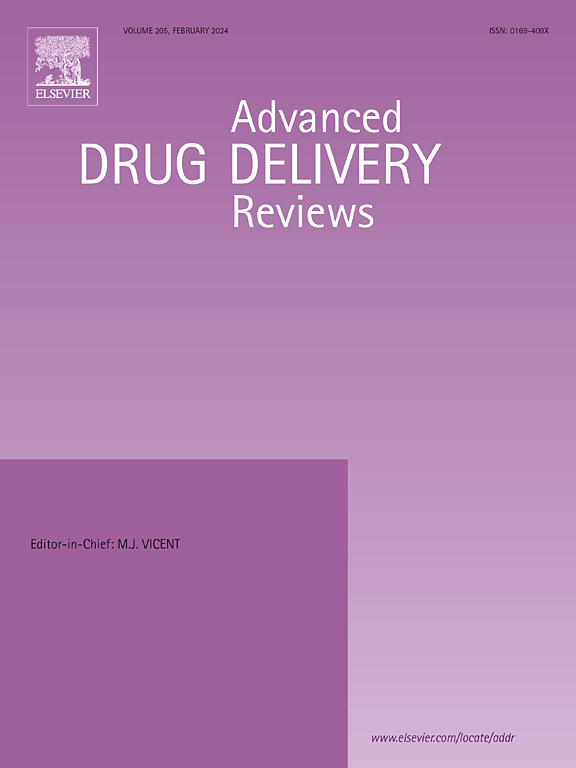Nanodiamond-Based Sensing: A revolution for biosensors in capturing elusive bio-signals in living cells
IF 17.6
1区 医学
Q1 PHARMACOLOGY & PHARMACY
引用次数: 0
Abstract
Cells constantly produce elusive bio-signals, such as cellular forces, free radicals, and molecular interactions, that are important for understanding diseases and treatment effects. However, detecting these signals is challenging because of issues with sensitivity, specificity, and the complexity of biological systems. Owing to their unique properties, nanodiamonds have emerged as a promising platform for detecting such elusive bio-signals, providing enhanced precision and effectiveness in diagnostics and therapies. In this review, we explore the detection of intracellular elusive bio-signals using nitrogen-vacancy (NV) centers in nanodiamonds, presenting case studies on their applications in cell force, free radicals, molecular interactions, and nanoscale thermometry. Moreover, we explore the design and applications of nanodiamonds as nanocarriers in quantum sensors and drug delivery systems.


纳米金刚石传感:生物传感器捕捉活细胞中难以捉摸的生物信号的革命
细胞不断产生难以捉摸的生物信号,如细胞力、自由基和分子相互作用,这对理解疾病和治疗效果很重要。然而,由于生物系统的敏感性、特异性和复杂性等问题,检测这些信号具有挑战性。由于其独特的性质,纳米金刚石已成为检测这些难以捉摸的生物信号的有前途的平台,在诊断和治疗中提供更高的精度和有效性。在这篇综述中,我们探讨了利用纳米金刚石中的氮空位(NV)中心检测细胞内难以捉摸的生物信号,并介绍了它们在细胞力、自由基、分子相互作用和纳米温度测量中的应用。此外,我们还探索了纳米金刚石作为纳米载体在量子传感器和药物输送系统中的设计和应用。
本文章由计算机程序翻译,如有差异,请以英文原文为准。
求助全文
约1分钟内获得全文
求助全文
来源期刊
CiteScore
28.10
自引率
5.00%
发文量
294
审稿时长
15.1 weeks
期刊介绍:
The aim of the Journal is to provide a forum for the critical analysis of advanced drug and gene delivery systems and their applications in human and veterinary medicine. The Journal has a broad scope, covering the key issues for effective drug and gene delivery, from administration to site-specific delivery.
In general, the Journal publishes review articles in a Theme Issue format. Each Theme Issue provides a comprehensive and critical examination of current and emerging research on the design and development of advanced drug and gene delivery systems and their application to experimental and clinical therapeutics. The goal is to illustrate the pivotal role of a multidisciplinary approach to modern drug delivery, encompassing the application of sound biological and physicochemical principles to the engineering of drug delivery systems to meet the therapeutic need at hand. Importantly the Editorial Team of ADDR asks that the authors effectively window the extensive volume of literature, pick the important contributions and explain their importance, produce a forward looking identification of the challenges facing the field and produce a Conclusions section with expert recommendations to address the issues.

 求助内容:
求助内容: 应助结果提醒方式:
应助结果提醒方式:


